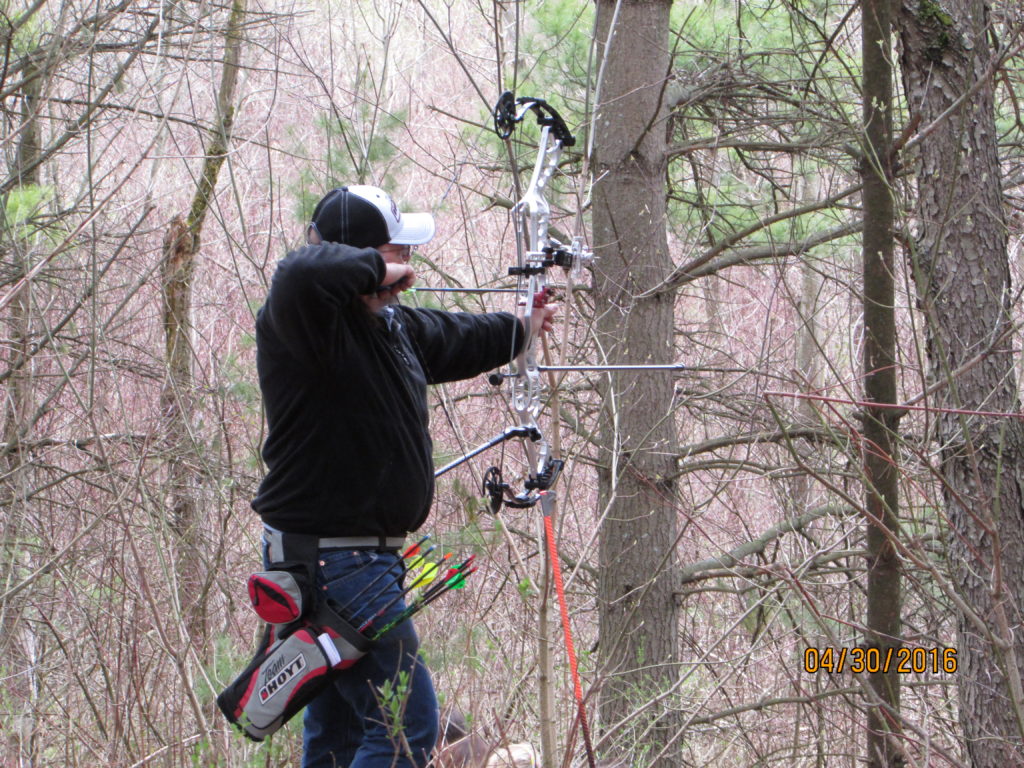Hold on, Hunters: Wear Your Harness
Contact(s): Chief Warden Todd Schaller, todd.schaller@wisconsin.gov; Joanne M. Haas, DNR Bureau of Law Enforcement public information officer, 608-209-8147
What Goes Up, Too Often Falls from Treestands

Research has shown most avid hunters face a 1-in-20 risk of getting hurt in a fall from a treestand.Photo credit: DNR
MADISON, Wis. — Wisconsin Department of Natural Resources Chief Warden Todd Schaller urges all hunters who use a treestand to wear a safety harness and avoid becoming another tragic fall statistic.
“A sad documented fact bore out by research shows if you hunt from a treestand, statistics say you are likely to fall,” Schaller said. “You can beat these odds if you take the time to review and follow treestand safety practices.”
The DNR partnered with the Marshfield Clinic Research Foundation and the UW Hospital and Clinics in 2014 to learn more about deer stand accidents and how to prevent them. A thorough review of medical reports found some common themes, the most important of which is that deer hunters underestimate the risks associated with treestands.
Research published in 2016 by the Wildlife Society research showed the most avid hunters face a 1-in-20 risk of getting hurt in a fall from a treestand. The society’s published research [PDF] indicates that risky climbing behavior can catch up with you the longer you hunt.
“Thinking that ‘I am careful’ or ‘I built that stand myself’ does not safeguard you from the fact that falls can happen to anyone. I’ve experienced one of those close calls, which changed my behavior,” Schaller said.
Schaller understands hunters want to enhance their ability to see and bag their deer during the archery season. “Without a mind on safety, the treestand advantage comes with a risk of falling. Falls can cause life-changing injuries or death,” he said.
Schaller offers these treestand safety tips:
- Always wear a full-body harness, also known as a fall-arrest system. Connect to your tether line and keep your tether line short. The tether is designed to keep you in the seat, not to catch you after you fall.
- Always have three points of contact while climbing into and out of the treestand: This means two hands and one foot or two feet and one hand at all times.
- Always use a haul line to raise and lower your unloaded firearm or bow into and out of the stand. You can also use the haul for other things like a heavy backpack.
- Use a lifeline when climbing up and down; this keeps you connected from the time you leave the ground to the time you get back down.
- Be aware of suspension trauma. Suspension trauma can happen in less than 20 minutes and can be fatal. Attaching an additional foot strap to the body harness will take pressure off your upper legs.
Prefer a course instead? Consider taking a free online treestand safety course. A 15-minute investment of your time in taking an online safety course could save your life. The Treestand Manufacturers Association provides a free, interactive course that you can finish in minutes. TreeStand Safety Course [exit DNR].
Schaller also urges hunters always to inspect their stands — especially the ones left up all year. “Inspect the tree, check straps, check hardware, wood condition,” he said. “Another way to check your stand is to pull on the stand and move it around to see how much it moves.”
To learn more about treestand safety and take the free Tree stand safety course, visit the DNR website.
You may also like
-
Bringing New Hunters Afield: Inside NDA’s First Field to Fork Rifle Event on a Refuge
-
Minnesota Bill to Legalize Eating Beaver
-
BIGGER BUCKS OUTFITTERS has a deal for you!
-
Animal Extremists Mount Legal Offensive Against Sportsmen
-
DNR Seeks Volunteers With Hunting Skills To Instruct Students Of All Ages
